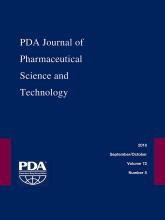Abstract
Monoclonal antibodies (mAbs) are typically produced using mammalian cell lines, which are known to express endogenous retrovirus-like particles (RVLPs) and also have the potential to be infected by viruses. This session focused on the detection and measurement of these viruses and RVLPs. In the first session, it was shown that next-generation sequencing (NGS) can detect, with a similar sensitivity as polymerase chain reaction (PCR), viruses in cells without a priori knowledge of the specific virus and more importantly that a specific NGS approach can decipher whether the signal corresponds to a replicating virus. The second session provided data showing that the PCR assay for detection of ecotropic recombinant virus (ERV) genome is an alternative to quantification by transmission electron microscopy (qTEM) for quantification of RVLP. In addition, the potential use of a harvest filter for RVLP retention in a perfusion process was discussed. In the third session, RVLP data from 67 different Pfizer programs spanning different conditions were presented. No single factor had a significant impact on the level of RVLPs. It was suggested that a “generic” or “worst-case” RVLP value, derived from a well-characterized platform cell culture process, could be used with confidence to determine a conservative retroviral safety margin for platform processes. In the fourth session, the sensitivity of several cell culture– and PCR-based assays for detection of different MMV strains using several production cells was discussed. It was found that molecular assays were generally superior in the breadth of detection with equivalent sensitivity.
LAY ABSTRACT: This session focused on the detection and measurement of viruses and virus-like particles in cell lines and manufacturing processes used for production of therapeutic proteins.
- Retrovirus-like particles
- Upstream processing
- Risk mitigation
- Next-generation sequencing
- virus strains
- Polymerase chain reaction
- © PDA, Inc. 2018
PDA members receive access to all articles published in the current year and previous volume year. Institutional subscribers received access to all content. Log in below to receive access to this article if you are either of these.
If you are neither or you are a PDA member trying to access an article outside of your membership license, then you must purchase access to this article (below). If you do not have a username or password for JPST, you will be required to create an account prior to purchasing.
Full issue PDFs are for PDA members only.
Note to pda.org users
The PDA and PDA bookstore websites (www.pda.org and www.pda.org/bookstore) are separate websites from the PDA JPST website. When you first join PDA, your initial UserID and Password are sent to HighWirePress to create your PDA JPST account. Subsequent UserrID and Password changes required at the PDA websites will not pass on to PDA JPST and vice versa. If you forget your PDA JPST UserID and/or Password, you can request help to retrieve UserID and reset Password below.






